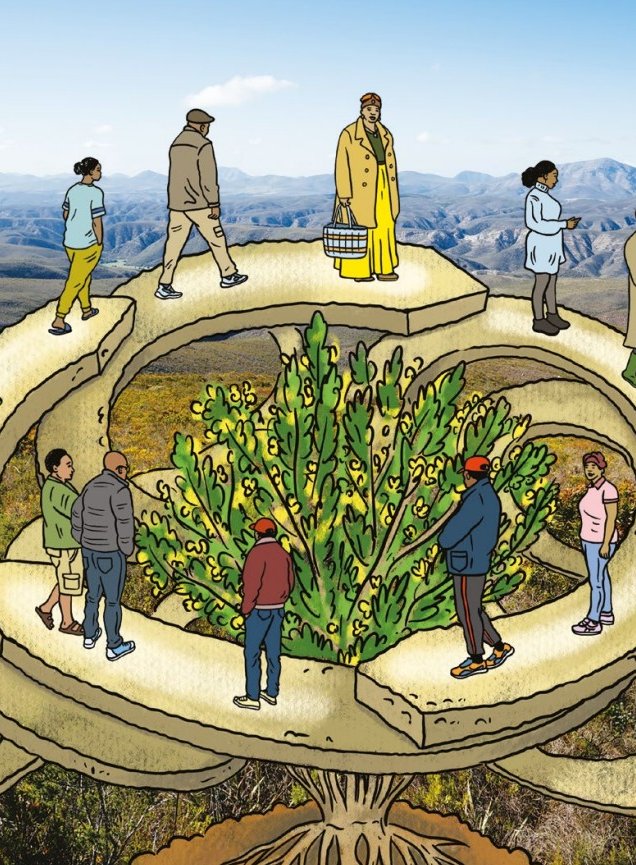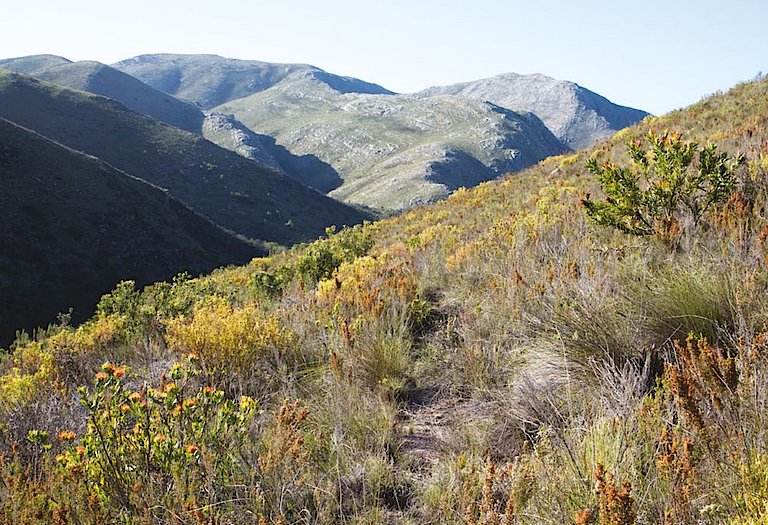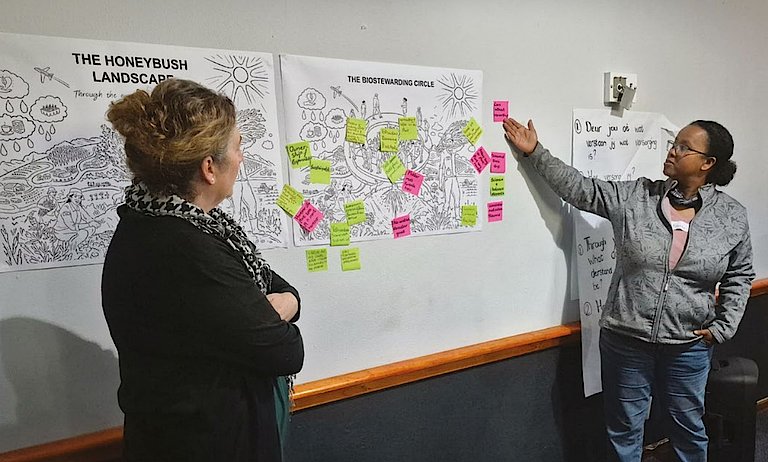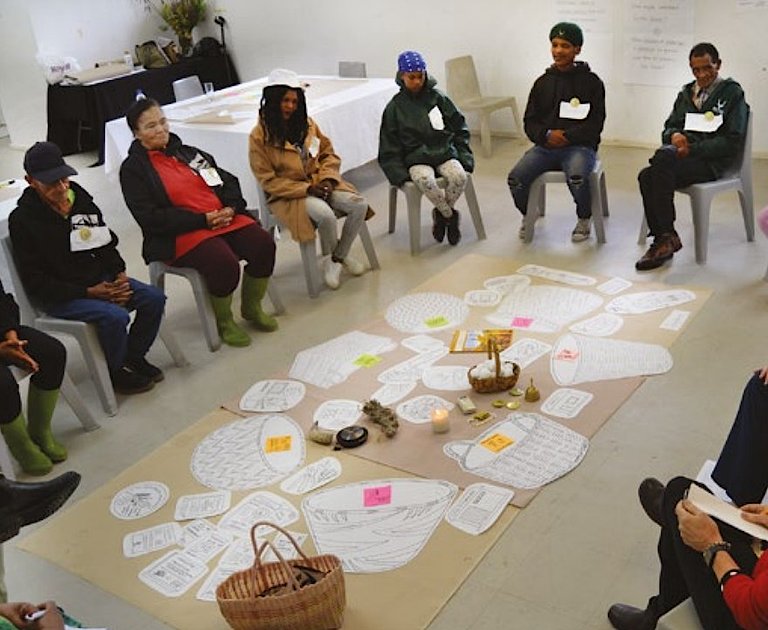What the project is about
As part of the ABS compliant Biotrade in Southern Africa (ABioSA) and BioInnovation Africa (BIA) project, relational agreements have been developed in collaboration with Wild Honeybush Harvesters to strengthen their agency and support informed decision-making about their livelihoods. Reflecting the commercial situation and bio-stewarding process, the approach also helps to highlight the often-overlooked local ecological knowledge, skills, and contributions of Wild Harvesters, whose work is deeply connected to the land. Still, their perspectives remain largely absent from decision-making fora and their role in climate change adaptation and mitigation underestimated.
Honeybush (Cyclopia) is one of 23 species found only in South Africa’s Fynbos biome. Its natural habitat spans the Eastern and Western Cape provinces, thriving in nutrient-poor, fire-prone habitats. Fire-adapted and resilient, Honeybush regenerates after burns, anchoring soils, feeding pollinators, and symbolizing renewal for both land and people.
Over a six-month period (January - June 2025), a facilitation team contracted by GIZ worked alongside the Department of Forestry, Fisheries and the Environment (DFFE) and the South African Honeybush Tea Association (SAHTA) to support this process.
Five community-based gatherings were facilitated over three months. Wild Harvesters and local community members, many of whom are involved in nursery work or combine Honeybush harvesting with other seasonal livelihoods, came together to explore how they experience and respond to their current realities. The discussions focused particularly on the precarity of seasonal work and the ways in which harvesters participate in the Honeybush industry and role in conservation and sustainable use practices.
The project paid close attention to the interwoven dynamics of place, plant, people, and land, while also integrating economic and ecological dimensions such as pricing, negotiation, and the ways communities navigate shifting terrains of income generation, resource access, and seasonal opportunity. Rather than seeking quick, externally driven solutions, the collaboration embraced the understanding that the Honeybush sector is a living system, shaped by relationships between people, plants, land, markets, and policies.
The focus was on listening deeply, learning together, and creating conditions for more inclusive participation, future collaboration and beneficiation in access benefit sharing agreements. Central to this approach was the guiding question: “How do Wild Harvesters see themselves within the Honeybush system?” This opened a generative space for participatory sense-making from the ground up, allowing Wild Harvesters to reflect on their positioning, relationships, and lived experiences within the broader system. All interventions emerged from the harvesters themselves, grounded in their daily realities of sustainable practices rather than externally imposed agendas.
Outputs and knowledge products
A key outcome of the collaboration was the self-formation of the Honeybush Guardians Forum, a platform initiated by Wild Harvesters themselves, to support one another and engage more directly with other value chain actors in the sector.
To sustain learning and action beyond the project, a set of sense-making aids was co-created. These are not prescriptive tools, but living resources designed to be adapted and used over time by different groups:
- The Bio-Stewarding Circle – A shared space for talking about care, continuity, and custodianship.
- The Knowledge and Skill of the Wild Harvester – Celebrating place-based practices and embodied expertise.
- The Wild Honeybush Landscape – A shared view of the broader system shaping wild harvesting.
- What Shapes the Price of Honeybush? – A conversation starter about value and fairness.
- Relational Agreements – A guide for building trust and working together.
These tools are designed to make visible ways and support deeper understanding and strengthen action in a system marked by ecological uncertainty, social complexity, and the need for ongoing relational work.
Impact
Although the Honeybush industry remains relatively small, with around 30 full-time equivalent Wild Harvester jobs, the social, ecological, and cultural value of this work is significant. This collaboration helped make these contributions visible and created pathways for stronger relationships, better recognition, and new forms of organizing across provincial boundaries connected to Honeybush and thus extending the work beyond the Wild Harvest Report.
The process emphasized the connection and mutual dependence between nature and local ecological knowledge holders, as well as the sustainable use of indigenous species. It also highlighted the importance of understanding the needs and realities of Wild Honeybush Harvesters within a rapidly evolving sector, and their role as stewards of place-based, local-level conservation. Across the 17,000 hectares of wild harvesting areas, sustainable practices are in place, including compliance with Sustainable collection practice (wild harvest) and Human rights commitments (UN/ILO) promotion of biodiversity management through sustainable harvesting plans, measures for implementing UEBT recommendations, and 100% organic certification.
November 2025






